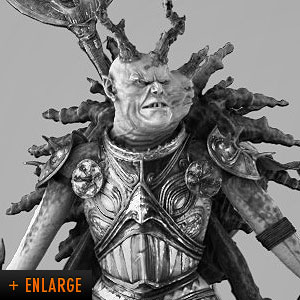
Pixologic's interview with Digic Producer, Gabor Marinov and Lead Modeling Artist, Tama Varga.
Gabor Marinov - Digic Producer
Digic is part of another company right? What is the role of Digic and what is its focus?
Digic Pictures is a computer animation studio located in Budapest, Hungary. Our company is part of Cinergi Interactive group, owned by Hungarian born Hollywood producer Andy Vajna.
Our main goal is to bring the traditionally great Hungarian animation into the digital age. We would like to create the kind of 3D animations that evoke strong feelings for our audience, rendering stunning visuals with the most recent technologies.
Digic’s first project was a two and a half minute intro film for a PC game called “Armies of Exigo”. This was the first Hungarian animation ever to be selected into the prestigious SIGGRAPH Electronic Theater. Later, Digic created four additional films for Exigo, totaling nearly 10 minutes. These films can be viewed on Digic’s website.
In addition to video game cinematics, Digic provided 60 visual effect shots for the blockbuster “Terminator 3: Rise of the Machines”. Since no other Hungarian studio had ever collaborated on a Hollywood mega-blockbuster film, this opportunity proved to be yet another exciting first for Digic. The standards were very high for creating special effects for Terminator 3. Digic’s work had to measure up to effects created by Industrial Light & Magic in order to be cohesive in the film. Digic’s website contains a multitude of material from “Terminator 3: Rise of the Machines”.
How many artists do you have at Digic?
There are currently eighteen employees at Digic, each specializing in their own field of the overall process. After four years of development, we have a strong, streamlined character animation pipeline based on Alias Maya so that the more traditional artists, who had little previous exposure to computers, can work alongside of the technologically experienced artists.
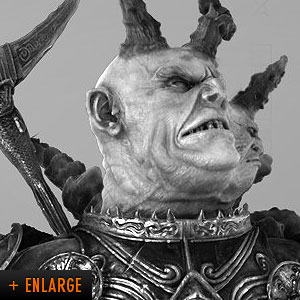
The work we are talking about today is for Warhammer: Mark of Chaos a real-time strategy game. Digic did the rendered cinematics. Can you tell us a little about what cinematics are and what role they have in game play?
Rendered Cinematics are films that introduce the game’s environment, explain key points of the story, and establish the mood before the game is played. As opposed to in-game cinematics that are created with the game’s engine, rendered cinematics are usually spectacular 3D short films that are visually way more complex. The textures, models and overall visuals we create here at Digic are extremely detailed; some of the high-end tools we use to achieve that are Pixar Photorealistic Renderman, Mental Images Mental Ray, D2 Software Nuke and of course ZBrush.
We recently completed a forty second teaser and a three and a half minute intro for Warhammer: Mark of Chaos. The Teaser is already available on our website for viewing; the Intro will be added later.
So could you say that your goal was to create as believable of characters and as engaging of characters as possible?
Our goal was to create characters that would enable us to control the feelings of our audience, and convey the message of the story. Even though the characters must be very rich in detail, if you look carefully at our humanoid characters, you will notice that they are not accurate anatomically. We had to change proportions and shape in order to avoid the “living dead” appearance that would take away the control of the audience’s feelings from us.
Those who collect Warhammer figures and play the game have lived with a level of detail that other games just don’t have to live up to. What was it like to work on a project of this size and with this immense level of detail?
Unbelievable! This project was a perfect match for Digic. The Warhammer universe provided us with an enormous amount of detail, which we thrive on. Because of its long history, many inspiring illustrations and figures have been created for the Warhammer world over time, which was a huge help in creating the film. The creator of the Warhammer world, Games Workshop, also provided us with continuous help to get even the smallest detail down perfectly. The Intro depicts the dark Warhammer world realistically. Everything looks tattered and dirty as it would be if these creatures battled daily.
"It was unquestionable that ZBrush2 would be an essential tool in creating our models."
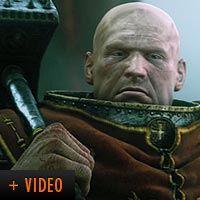
What spurred your interest in ZBrush and when did you begin to use it?
We’ve noticed that fantastic 3D images started to appear in various forums and galleries on the internet and realized that the creators were using a surprisingly new tool. The models were so rich in detail; we couldn’t believe that they were created with a computer.
After a little investigation, we found out that the images were created with the beta version of ZBrush2, which was still under development at the time. We knew then that we had to get our hands on this tool as well. From then on, we followed its development and couldn’t wait to integrate it into our production pipeline. Earlier we experimented with 3D scanning of physical models, but this process was difficult and slow. ZBrush seemed to be a solution that eliminated this burden. It provided our artists with a tool with which they could concentrate on the artistic aspect of the process, without having to hassle with debilitating technical issues.
We acquired ZBrush2 shortly after it appeared on the market and started to discuss how to integrate it into our pipeline, so we could utilize the software to its full extent. When the Warhammer project came along, it was unquestionable that ZBrush2 would be an essential tool in creating our models.
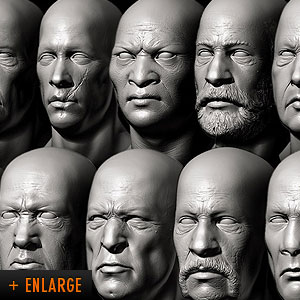
Tamas Varga - Lead Modeler
We have started to hear a phrase from artists calling it the ZBrush pass, what roles does ZBrush play in your pipeline?
The main role ZBrush plays at Digic is to add a medium to high frequency detail in our models. I think this must be what most people refer to as a ZBrush pass: taking a reasonably detailed 3D model and adding all the various imperfections to its surface that will break up the unnaturally smooth shading and silhouettes so commonly seen in computer graphics. ZBrush is also very fast and effective in modeling static details that we don't want to animate, like ornaments and relieves in armor, weapons or buildings, which would take several days to create using a traditional modeling package.
We have also used ZBrush to create 3D conceptual art. We would sculpt 3D shapes, like the face of the hero using simple box-like geometry. Once the digital sculpture was approved, we export the mesh and re-surface it using standard polygon modeling tools to create an animation-friendly model. Finally it would receive a “ZBrush pass” as well, to get some final tweaks and of course all the small details. It is very similar to the traditional workflow of sculpting a clay model and scanning it for resurfacing, but since it is entirely digital, we are able to perform this process much faster, making us capable of shorter productions.
What assets did you use ZBrush for?
Our focus has always been on the creation of highly detailed characters and props (e.g. weapons, armor). We've also found it quite effective for sculpting terrain, rocks and trees, so nowadays almost all of our models have some ZBrush work in them.
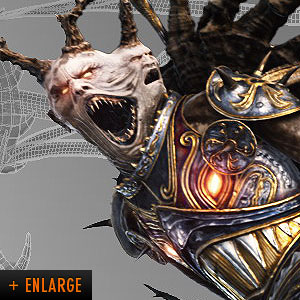
You were able to get some amazingly detailed sculpting in your models. Can you describe the modeling process for the arm wrappings and the bent and worn equipment that looks like it has been lived in for years?
I think the biggest secret in our modeling process has to be the people behind it. We have a small team of artists with a strong traditional art background, and a multitude of experience in painting and sculpting. Some of them haven't ever used a computer before joining Digic, and they are responsible for most of our ZBrush sculpting. Although they were trained to use various tools like Projection Master, alpha masks and so on, our artists usually would still prefer just using the standard brush and build up all the detail by hand.
What was your workflow for getting all of your detail sculpting out of ZBrush and into the cinematic?
We are using Pixar's Renderman for rendering. It allows for generating textures and turning displacement on in the shaders. PRMan will dice up everything into micro polygons anyway, so there really is no reason to use normal maps in addition to the displacements.
The new displacement ability of the exporter plug-in, to generate 32-bit float maps, is a great addition, as we don't have to deal with the displacement intensity parameters. However, sometimes we still prefer to stick with the 16-bit maps because we can easily touch them up in Photoshop. Multi-displacement textures for example, tend to require some small corrections around the map seams, as the final layer of sculpting can only be done after the model has been separated into different parts.
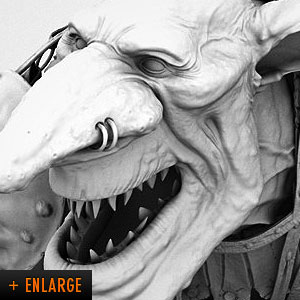
What was your most detailed model? How many polys was it? How many separate displacement maps did you break your models up into?
Our most detailed model in ZBrush had to be the Bloodthirster daemon, but we decided to cut it up into a few parts before importing. It was already quite detailed as it appeared in tight close-up shots, but we still needed displacement for the skin and other small details. The largest component was the upper body including the head, arms and wings, which comprised about 10 million polygons at the 6th level of subdivision. Of course we had to break it up into multiple pieces at level 5, since this amount of polygons would have been too much even for ZBrush. We then used the multi-displacement plug-in to generate several 2K and 4K maps. The entire model has some 30 million polygons worth of detail in the character, its armor and other accessories. However, generally we prefer to build our models in smaller pieces, by creating the head, hands, different parts of armor, clothing etc. separately. We try to keep a uniform polygon size and distribution across the model, so that the artists will always have enough geometry to sculpt details. Next the models are separated into groups before exporting, so that each part totals about 2-4 million polygons at the highest subdivision level in Zbrush.
In one of the images you provided, you show how you used one generic head to create what looks like 17 completely different heads. Can you talk a little bit about how ZBrush has increased the efficiency of your production work?
One of the biggest benefits that ZBrush provides is the ability to take models with drastically different mesh complexity, and create a much more consistent level of detail with the use of displacement mapping. We can smoothly scale the modeled detail of our characters depending on the needs of the production, from very simple low-poly versions to highly detailed geometry for muscle simulations and such – and use various levels of displacement mapping to bring them up to the same visual quality.
In the Warhammer Intro, we had three hero characters, a Warrior Priest, Bloodthirster daemon and an Elf Shadow Warrior, which required very detailed 3D, models for the facial animation (dynamic wrinkles, skin sliding etc.). There were also dozens of background characters which required a tremendous amount of time to animate. Instead, we created a simple generic head mesh, and sculpt variations of it in Zbrush. We applied the differences as blendshapes and displacement maps. This process allowed us to animate the base head only - so we modeled and rigged the faces of all our background characters. Overall, this method took us as much time to complete as we spent on a single hero character. Of course the facial animation of background characters wouldn't hold up to the hero’s in tight close-ups, but it worked surprisingly well, and the displaced model looks almost as detailed as the hero’s head, with all the wrinkles and pores.
"ZBrush is a much more intuitive approach to modeling, and the results look better than with previous methods."
What would you say is ZBrush’s greatest contribution to your pipeline?
It has allowed us to capitalize on the skills and experience of our highly talented traditional artists with little software training, both in modeling and displacement texture painting tasks. Now we are able to create very detailed models in a fraction of the time it required previously. In addition, it is a much more intuitive approach to modeling, and the results look better than with previous methods.


